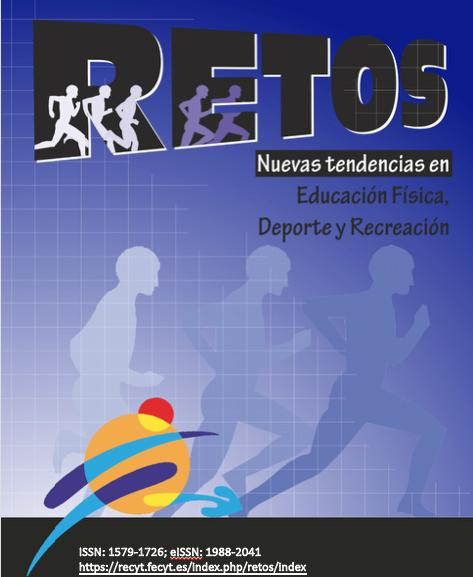BAPNE method in Physical Education for the development of kinesthetic intelligence and executive functions
DOI:
https://doi.org/10.47197/retos.v68.116546Keywords:
Ecuadorian curriculum, physical education, Executive Functions, BAPNE method, kinesthetic intelligenceAbstract
Introduction: This research aims to strengthen the training of future Physical Education teachers through a solid theoretical foundation, integrating an active, inclusive methodology aligned with the educational demands of the 21st century. The BAPNE method, focused on body percussion, stimulates brain activity through multiple stimuli, activating both hemispheres and promoting an anátomo-functional, bio psychosocial, and psychomotor integration.
Objective: To innovate the teaching of Physical Education within the framework of the Ecuadorian curriculum by incorporating the BAPNE method, aimed at enhancing kinesthetic intelligence and executive functions in children and adolescents in today’s society.
Methodology: From the total population, a sample of 20% (100 students) from a basic education institution was selected, including sublevels from Early Childhood to Upper Basic. These students participated in 8 pedagogical Physical Education sessions implemented using the BAPNE method. Mixed instruments were used, including the adapted BRIEF-2 test, the teacher’s reflective journal, focus group interviews, and a motor performance test based on the Psychomotor Development Scale (EDP).
Results: The development phases of the project include an initial diagnosis, analysis of results from a global perspective based on the BAPNE method, scientific production, teacher training, and the creation of a methodological guide.
Conclusions: The design of a globalized didactic program based on this methodology allows for structuring educational planning oriented toward the development of multiple intelligences, with an emphasis on kinesthetic intelligence. The sequential organization of the program ensures its adaptability to different educational levels.
References
Diamond, A. (2013). Funciones ejecutivas. 64. Obtenido de https://doi.org/10.1146/annurev-psych-113011-143750
Romero Naranjo, F. J., Andreu-Cabrera, E., & Arnau-Mollá, A. F. (2023). Neuromotricidad y esquema corporal. Bases para el uso de la percusión corporal en las ciencias de la educación física y el de-porte (Neuromotricity and body schema. Bases for the use of body percussion in the sciences of physical education and sport). Retos, 47, 615–627. https://doi.org/10.47197/retos.v47.95922
Gioia, G. A. (2015). Behavior Rating Inventory of Executive Function–Second Edition [BRIEF-2]. Obte-nido de https://www.parinc.com/products/BRIEF-2?utm_source=Homepage&utm_medium=small_banner&utm_campaign=BRIEF2_handouts
León López, L. W. (2021). Metodología B–Learning en Educación Física para el desempeño. Repositorio Universidad Cesar Vallejo. Obtenido de https://repositorio.ucv.edu.pe/handle/20.500.12692/94734
Maquera-Maquera, Y. A., Bermejo-paredes, S., Olivera Condori, E., & Maquera Maquera, Y. (2025). Com-petencias y rol docente de educación física en nuevos contextos formativos. Retos, 66, 599–608. https://doi.org/10.47197/retos.v66.112200
Maupoey, I. (2022). El método BAPNE y su implantación en una escuela de música. Universitat Jaume I. Obtenido de https://repositori.uji.es/xmlui/handle/10234/198316
Ministerio de Educacion [MINEDUC]. (2013). Curriculo de Educacion Física para la EGB y BGU Actuali-zacion curricular 2012. Obtenido de https://educacion.gob.ec/wp-content/uploads/downloads/2013/09/AC_Ed_Fisica_Basica_100913.pdf
Ministerio de Educación [MINEDUC]. (2017). Guía didactica de implementacion curricular para EGB y BGU en educacion Física. Obtenido de https://educacion.gob.ec/wp-content/uploads/downloads/2017/02/Guia-de-implementacion-del-Curriculo-de-EF.pdf
Ministerio de Educacion [MINEDUC]. (Diciembre de 2020). PASA LA VOZ "Diseño Universal de Apren-dizaje: Una respuesta a la diversidad". Obtenido de https://educacion.gob.ec/wp-content/uploads/downloads/2020/12/Pasa-la-Voz-Diciembre-2020.pdf
Ministerio de Educacion. (2016). Currículo de Educación Física para la EGB y Bachillerato. Quito: MI-NEDUC. Obtenido de https://educacion.gob.ec/wp-content/uploads/downloads/2016/08/EF-completo.pdf
Naranjo, R. (2021). Método BAPNE: Estimulación cognitiva, emocional y motriz. UNIR. Obtenido de https://www.unir.net/revista/educacion/metodo-bapne/
Paul A. Kirschner, J. S., & Clark, R. E. (2006). Por qué no funciona la orientación mínima durante la ins-trucción: un análisis del fracaso de la enseñanza constructivista, basada en el descubrimiento, en problemas, en la experiencia y en la investigación. Obtenido de https://www.tandfonline.com/doi/abs/10.1207/s15326985ep4102_1
Rink, J. E. (2001). Investigando los supuestos de la pedagogía. Journal of Teaching in Physical Educa-tion, 20(2). Obtenido de https://scholarcommons.sc.edu/pedu_facpub/17/
Rodriguez, S., Arancela, V., & Undurraga, C. (1996). Escala deevaluacion del desarrollo psicomotor de 0 a 24 meses. Obtenido de https://www.capacitacionesonline.com/blog/wp-content/uploads/2018/11/EEDP.-Escala-de-evaluaci%C3%B3n-del-desarrollo-Psicomotor-de-0-24-meses.-1996.pdf?utm_source=chatgpt.com
Romero, N. F. (2012). Percusión corporal y lateralidad. MÚSICA Y EDUCACIÓN. Obtenido de https://jordijauset.es/wp-content/uploads/2013/08/Bodypercussion-Bapne-Lateralidad.pdf
Shapiro, L. (2019). Cognición encarnada, 2ª ed. APA PsycInfo. doi:https://doi.org/10.4324/9781315180380
Downloads
Published
Issue
Section
License
Copyright (c) 2025 Luiggi Wladimir León López, Richard Iván Ramírez Anormaliza, Orlando Patricio Romero Ibarra, Freddy Javier Vera Delgado, Wilson Fernando Arcos Brito

This work is licensed under a Creative Commons Attribution-NonCommercial-NoDerivatives 4.0 International License.
Authors who publish with this journal agree to the following terms:
- Authors retain copyright and ensure the magazine the right to be the first publication of the work as licensed under a Creative Commons Attribution License that allows others to share the work with an acknowledgment of authorship of the work and the initial publication in this magazine.
- Authors can establish separate additional agreements for non-exclusive distribution of the version of the work published in the journal (eg, to an institutional repository or publish it in a book), with an acknowledgment of its initial publication in this journal.
- Is allowed and authors are encouraged to disseminate their work electronically (eg, in institutional repositories or on their own website) prior to and during the submission process, as it can lead to productive exchanges, as well as to a subpoena more Early and more of published work (See The Effect of Open Access) (in English).
This journal provides immediate open access to its content (BOAI, http://legacy.earlham.edu/~peters/fos/boaifaq.htm#openaccess) on the principle that making research freely available to the public supports a greater global exchange of knowledge. The authors may download the papers from the journal website, or will be provided with the PDF version of the article via e-mail.


